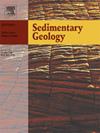Sequence stratigraphy in continental endorheic basins: New contributions from the case of the northern extensional Teruel Basin
IF 2.9
2区 地球科学
Q1 GEOLOGY
引用次数: 0
Abstract
The tectono-sedimentary analysis is a sequence stratigraphy method particularly useful in continental tectonically active basins far from the influence of sea level changes. It provides a comprehensive study of the sedimentary features and stratigraphic architecture of a basin focusing on the stratigraphical, mainly cyclic, trend of the rock record in order to define genetic (tectono-sedimentary units-TSUs) controlled by allocyclic factors: tectonics and climate. The tectono-sedimentary analysis has been traditionally used in basins related to compressive stress regimes, but their application in extensional basins is less common. In this work the results of the detailed tectono-sedimentary analysis of the northern Teruel Basin rocks are presented. Vertical and lateral distribution of mappable lithofacies associations reveal different depositional systems laterally related and the main paleogeographic changes from the Late Miocene to Early Gelasian (11–1.8 Myr). Five main alluvial progradational-retrogradational cycles integrate six TSUs with chronostratigraphical meaning, bounded by isochronous stratigraphic surfaces (sedimentary breaks) that represent maximum alluvial progradations, and define the basin geodynamic framework. A main challenge, not commonly addressed in this kind of studies, is the discrimination of the effects of tectonic and climate for each unit, which has been based on evidences of synsedimentary tectonism in combination with δ18OPDB isotope data. It is demonstrated that the sedimentary evolution was mainly controlled by the tectonics, with the phases of tectonic activity being consistently recorded as alluvial progradations (correlative lacustrine retractions) and climate only modulating (amplifying or vanishing) the tectonic effects. Certain guidelines are proposed to adequately recognize and characterize genetic units in continental extensional basins. Our results reinforce TSUs as very valuable tools for studying active continental basins far from sea level effects and to discriminate the influence of allogenic controls in sedimentation.
陆相内海盆地的层序地层学:来自北伸展特鲁埃尔盆地的新贡献
构造-沉积分析是一种层序地层学方法,特别适用于远离海平面变化影响的大陆构造活动盆地。它对盆地的沉积特征和地层构型进行了全面的研究,重点是岩石记录的地层(主要是旋回)趋势,以确定由构造和气候等非旋回因素控制的成因(构造-沉积单元- tsu)。构造-沉积分析传统上用于与压应力有关的盆地,但在伸展盆地中的应用较少。本文介绍了特鲁埃尔盆地北部岩石的详细构造-沉积分析结果。可测岩相组合的垂向和横向分布揭示了晚中新世至早格列世(11-1.8 Myr)不同的沉积体系横向相关和主要的古地理变化。五个主要的冲积进退旋回整合了六个具有年代地层意义的tsu,以代表最大冲积进积的等时地层面(沉积断裂)为界,并定义了盆地的地球动力学格局。基于同沉积构造作用的证据,结合δ18OPDB同位素数据,区分构造和气候对各单元的影响是这类研究中通常未解决的主要挑战。研究表明,沉积演化主要受构造控制,构造活动的阶段一致记录为冲积进积期(相关的湖泊退缩期),而气候只是调节(放大或消失)构造作用。提出了一些准则,以充分认识和表征大陆伸展盆地的成因单元。我们的研究结果表明,tsu是研究远离海平面影响的活动大陆盆地和区分同种异体控制对沉积的影响的非常有价值的工具。
本文章由计算机程序翻译,如有差异,请以英文原文为准。
求助全文
约1分钟内获得全文
求助全文
来源期刊

Sedimentary Geology
地学-地质学
CiteScore
5.10
自引率
7.10%
发文量
133
审稿时长
32 days
期刊介绍:
Sedimentary Geology is a journal that rapidly publishes high quality, original research and review papers that cover all aspects of sediments and sedimentary rocks at all spatial and temporal scales. Submitted papers must make a significant contribution to the field of study and must place the research in a broad context, so that it is of interest to the diverse, international readership of the journal. Papers that are largely descriptive in nature, of limited scope or local geographical significance, or based on limited data will not be considered for publication.
 求助内容:
求助内容: 应助结果提醒方式:
应助结果提醒方式:


